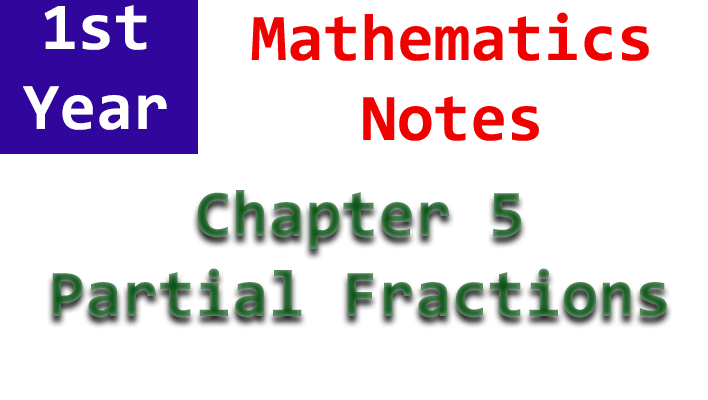In previous classes, we have been introduced to the process of combining two or more rational fractions into a single rational fraction, exemplified by equations (i) and (ii). In this chapter, we will explore the reverse process, where we express a single rational function as a sum of two or more individual rational functions, referred to as partial fractions. This technique, known as Partial Fraction Resolution, holds significant importance in calculus.
An equation, formed using the equality sign “=”, can be categorized into two types: Conditional equations, valid only for specific values of the variable, and Identities, which hold true for all values of the variable.
A rational fraction, denoted as P(x)/Q(x), where P(x) and Q(x) are polynomials with Q(x) ≠ 0 and no common factors, can be categorized as Proper Rational Fractions or Improper Rational Fractions. A Proper Rational Fraction has a numerator polynomial of lower degree than its denominator, while an Improper Rational Fraction has a numerator polynomial of equal or higher degree than its denominator.
Any improper rational fraction can be reduced by division to a mixed form consisting of the sum of a polynomial and a proper rational fraction.
The process of separating a rational fraction into partial fractions results in an identity, valid for all values of the variable. The coefficients of the partial fractions can be determined using the theorem that states, “If two polynomials are equal for all values of the variable, then the polynomials have the same degree, and the coefficients of like powers of the variable in both polynomials must be equal.”
Resolution of a Rational Fraction P(x)/Q(x) into partial fractions involves several steps. Firstly, ensure that the degree of P(x) is less than that of Q(x); if not, divide and work with the remainder. Then, clear the given equation of fractions and equate the coefficients of like terms (powers of x) before solving for the resulting equations to find the coefficients.
The chapter discusses different cases of partial fractions resolution. Case I focuses on resolving P(x)/Q(x) into partial fractions when Q(x) consists of non-repeated linear factors, which can be factored as Q(x) = (x – a1)(x – a2)…(x – an), where a1 ≠ a2 ≠ … ≠ an. In this case, the partial fraction decomposition results in A/(x – a1) + B/(x – a2) + … + N/(x – an), where A, B, …, N are coefficients to be determined.
To find these coefficients, values of x that make the linear factors of the denominator zero are substituted into the identity. Solving these equations allows for the determination of the coefficients, yielding the partial fractions.
In summary, the chapter introduces the concept of partial fractions, explains how to resolve rational fractions into partial fractions, and provides examples to illustrate the process, emphasizing the importance of equating coefficients and substituting values to find the partial fraction coefficients.

